Lizzy Koltai recently relocated Helios, her horse-powered farm, from leased land in Bowdoinham to her own land in Gouldsboro. While she prepares long-fallow agricultural fields there for cultivation, she’s taken another job to generate income on a nearby farm – a typical move for a new farmer. She sometimes drives a tractor on that farm, and you might think she’d be happy to get a chance to zip through plowing duties on mechanized equipment.
Not so.
“Every time I am on a tractor I am so grateful that most of the time I am behind a horse,” Koltai said. She ticks off the reasons: “Horses are quiet. There is no motor. There is no diesel smell. It is a completely different work environment.”
From an outsider’s perspective, running a horse-powered farm might seem akin to using a vintage letterpress instead of a laptop, a quaint representation of the past that looks charming but requires more manual labor, not to mention repairs that cannot be solved with a trip to Staples.
But more Maine farmers are turning to horse power, and they’re not doing it to be sweetly old-fashioned. (Or for religious and cultural reasons, like the Amish communities in Unity, Smyrna and in the Fort Fairfield area.) To them, it’s a new modern: sustainable, smart and soulful. They cite reasons ranging from economics (and not just because horses cost a lot less upfront than a tractor) to environmentalism.
“Horses are truly solar-powered,” said Koltai, who is on the board of the Draft Animal Power Network, a national organization with 400 members. “Grass is a very good renewable.”
They’re also a way of connecting to farming on a different level.
“It’s just a different give-back,” said Kate Del Vecchio of Tender Soles horse-powered farm in Richmond. “It feels much more emotionally connected.”
The horses aren’t pets, by any means, but Tony and Jesse (both geldings, or castrated males) are part of the farm family.
“They love to be with us, and they are curious,” Del Vecchio said. “If we are working near them, they come and watch us.” She and her partner Rich have a new baby daughter, Samara, who is 5 months old, and, “they love her. They will stare at her and try to figure out what she is.”
HERDS OF HORSES?
The membership in the Draft Animal Power Network might not be vast, but Donn Hewes, the group’s president, said it is growing. By way of example, he points to Horse Progress Days, an Amish-run promotional event that started in 1993 and features demonstrations of new equipment. It moves to a new location every year and regularly draws crowds of 20,000.
Hewes came to draft animals by way of mules, and now farms in Marathon, New York, with three mules and three horses. “It is one of the deepest relationships you can have with an animal,” he said.
His group does not track numbers for farming with draft animals in Maine specifically, and neither does the state’s Department of Agriculture, Conservation & Forestry. Maine Organic Farmers and Gardeners Association doesn’t have figures either, although agricultural services director Dave Colson sees a trend. “I definitely think it is increasing,” Colson said.
Mary Quinn Doyle, author of “Unique Maine Farms,” said she’s visited 200 of Maine’s over 8,000 farms, 17 of which were at least partially horse-powered, and Adrienne Lee of New Beat Farm, who has been working with horses for 10 years, knows of at least 25. She described Waldo County, where she and husband Ken Lamson farm, as “a hot spot for horse-powered farming.”
Lee started her own farming career on small-scale farms that used tractors. It hadn’t even occurred to her to farm with horses. “I grew up riding a little bit, but I never imagined that people were using horses to actually do production farming,” she said. “Besides the Amish.”
Then she was exposed to farms where it was working at the scale she wanted to farm on (New Beat has 4 acres in production) and started to see the possibilities. She found mentors in Earle Mitchell and Penny Savage of Bowdoin’s Mitchell & Savage Farm, whom she spent time with on the weekends, filling in the “missing link in my education.” (She studied sustainable agriculture at the University of California Santa Cruz.) They remain close, and “we call them when we have questions about the horses.”
What appealed to her primarily was that horses offered a way to create an ideal farm ecosystem.
“You could equate it to a closed loop,” she said. “We were trying to find a way that we are not relying on things that are not coming from off of our farm.” They minimize their reliance on fossil fuels by not using motorized equipment – that’s the day to day – but they also aren’t participating in the economy that uses vast amounts of energy to create “these giant new tractors.”
All of that was appealing. So was the relatively low cost of horses compared to tractors. Lee spent about $4,000 on her first team, whereas even a used tractor can cost $15,000 and a new one might start at $50,000.
For a new farmer, horses have a built-in bonus. Farmers say acquiring the equipment needed to work the horses is surprisingly easy, and cheap. They go to Uncle Henry’s, antique shops (Koltai picked up a plow for $30 at one). They can see what’s been left next to the stone wall on their own properties, and they can rely on the kindness of strangers.
“When I start talking about using the horses, people perk up and say, ‘Oh, I have this thing on my land, would you be interested?’ ”
“Keeping my upfront costs low was definitely a factor,” Koltai said. “But it was more of a benefit than a deciding factor.”
FIELD WORLD
It takes Lee and Lamson a full day to plow 2 acres behind their horses. Undeniably, the farmers next door with motorized equipment move much faster.
“Our neighbor will plow 30 acres in the time it takes us to do two,” Lee said. “But then again, we’re not in hundreds of thousands of dollars of debt on giant equipment that helps us work that fast. At the end of the day, I don’t think there is that much difference there.”
But whereas a farmer can leave a tractor in the field and head in for supper, the horses need to be fed and put to bed. Typically, Del Vecchio of Tender Soles said, that adds an extra hour to the day. And while the work is being done, there’s no slacking off.
“There is no zoning out,” she said. “At least not to the extent that you can on a tractor. You are constantly watching your step. And if the horses are getting tired, you have to give them a rest. I think it is a lot more work.”
Del Vecchio and her partner apprenticed at New Beat before starting Tender Soles, and she still remembers the first time working with horses clicked for her.
“It was this beautiful summer day, and Ken (Lamson) and Rich and I were working with the horses. We were out there plowing and I felt comfortable for the first time. It felt so good and rewarding and so connected, all five of us.”
The connection, Lee said, means that there are windy days when the horses are miserable and the humans are miserable.
“It’s not all roses. We love working with horses but the flip side is, you are also working with a living being.” At New Beat they have three mares, and when those mares are in heat, “They are not so easy to work,” Lee said. “You are working with a lot of emotions, and that can affect how the day goes for you.”
Most of these horses work in the woodlots, skidding out logs, but they do get winters off. Springtime can be a challenge. “The first month when you are out there can be kind of a struggle,” Lee said.
“You can’t be distracted, because the horse knows,” Koltai said.
Do those fast-plowing neighbors look at the New Beat farmers as those crazy hippies with their horses? Lee laughs. “To some degree maybe, but our town has been an agricultural town since its inception and all of the farmers around here have seen just about everything. I think they respect what we do and they know we work hard.”
Koltai went to Williams College, where she was a physics major on a pre-med track. At a certain point she had to break it to her parents that not only was she not going to be a doctor, but she was going to farm in 19th-century style. They rolled with it, thanks to a certain bestselling author.
“They read Michael Pollan’s books and that helped,” she said with a laugh.
PRICE POINT
Hewes, of the Draft Animal Power Network, said farmers who use horses do have to tailor their economic expectations to their situation. That might mean having an off-farm job, and it almost certainly means “selling high-price items to higher-income people” who appreciate what they’re doing.
While Lee and other horse-powered farmers say they don’t charge more for their products than a typical organic farmer – who is able to command a premium – they do get a leg up from their horses when it comes to marketing. They run an 18-week summer CSA (Community Supported Agriculture) share that incorporates goods from three other horse-powered farms (Tender Soles, Sandy Meadow Farm in Unity and Wild Miller Gardens in Palermo). Lee drives the CSA’s vegetables down to Portland, where they have a customer base content to pay $400 for a share that feeds two adults.
The horses do give these farmers a leg up with certain customers.
“There are so many CSAs out there,” Del Vecchio said. “People might choose our CSA because of the horses.”
They definitely attract visitors.
“We get people just stopping to take pictures,” she said. “People bring their grandkids and kids to the farmstand because they might get to see the horses.”
Many farms use their draft horses in the winter for sleigh rides, and Del Vecchio said Tender Soles is considering adding that to their farm economy. They’re in their second year of farming in Richmond and have about 2 acres in cultivation with vegetables and flowers. “We’re going to extend a little bit more, but we’re going to do it slowly.”
That’s sensible; growth is the area where horse-powered farms need to move with caution, Hewes said. While he does know of some 20-acre operations that rely on horse power, farmers with 5 to 10 acres are more typical. Going beyond that is hard to manage; the man hours spent versus the returns don’t make economic sense.
“People face the economic reality when they try to grow the farm business,” Hewes said. “And some people will choose to give up the horse.”
The biggest hurdle is when they want to add employees, he added, in part because wage employees require consistency. If it’s just him and his immediate family working the farm, it’s not such a big deal if things move slowly. “When I work on my farm, I can have moments when I am making a dollar an hour and moments when I am making $50 an hour.” It evens out. But add wages into the equation and everything becomes more urgent.
It’s not just younger farmers who tend to be drawn to horse power, he said. “It’s people with a young mindset.”
GIDDY UP
Here’s a sure sign that working with horses is catching on. Goranson Farm, a well-established organic farm in Dresden that has long relied on motorized equipment, has added horses to the mix, courtesy of the younger generation. Carl Johanson returned to Maine from Bennington College a few years ago and told his farmer parents he had an interest in working with horses for environmental reasons.
At Bennington he studied agro-ecology. “I was trying to find a way to produce food and reduce carbon emissions. I did a bunch of research on biodiesel and that sort of thing.”
Biodiesel was fine, he said, but horses won out over chemistry labs. The soil benefits are considerable, starting with the excellent manure fertilizer they provide (organic rules prohibit putting fresh manure on a field in production; the manure needs to rest for a minimum of 120 days). Another advantage? The tractor compacts soil, whereas horses aerate it with their hooves.
Johanson is now on his fifth season of integrating horses into his parents’ farm.
“We’re working a lot of land,” he said. “To many folks it would be counterintuitive to try to integrate horses on a farm this scale.”
He started by using his first horse to cultivate between tomato and asparagus plantings, as well as bringing grain to the pig. His parents have been supportive.
“They are totally there for me and definitely willing to give me the time to figure out the horses,” Johanson said. He appreciates their patience, because “If we were trying to make money, I really shouldn’t be working horses at all. But I am constantly playing with it, trying to create systems that would allow me to integrate the horses into a system that is built around motorized equipment.”
That includes going beyond the old equipment that other farmers are using. He recently worked with an Amish builder – if you want new horse-drawn farm equipment, the Amish are building it – to design a cultivator.
“He custom-made it,” Johanson said. “It allows us to cultivate corn and squash with the same efficiency of a tractor.” He can take his work with horses to a larger scale then.
Goranson Farm is unlikely to ever give up their tractors, but the two kinds of farming can co-exist in a way that makes both generations of farmers, old and new, happy.
“There is a deliberateness to working with horses that I love,” Johanson said. “I love the fact that I have to plan, and I have to be more aware. Selfishly, as an individual, I think it is helping me grow.”
Send questions/comments to the editors.


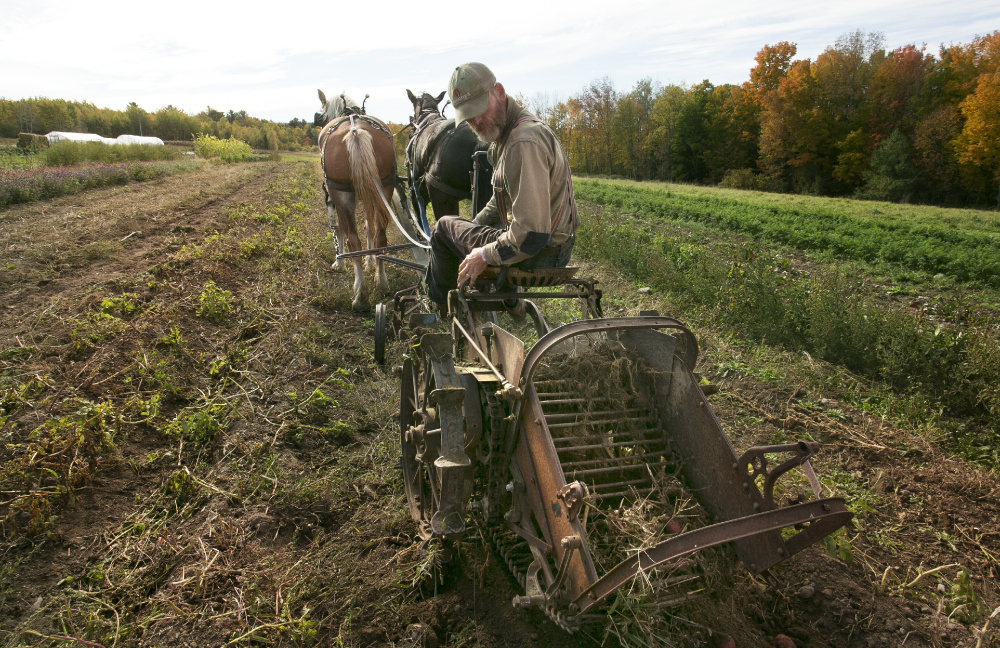
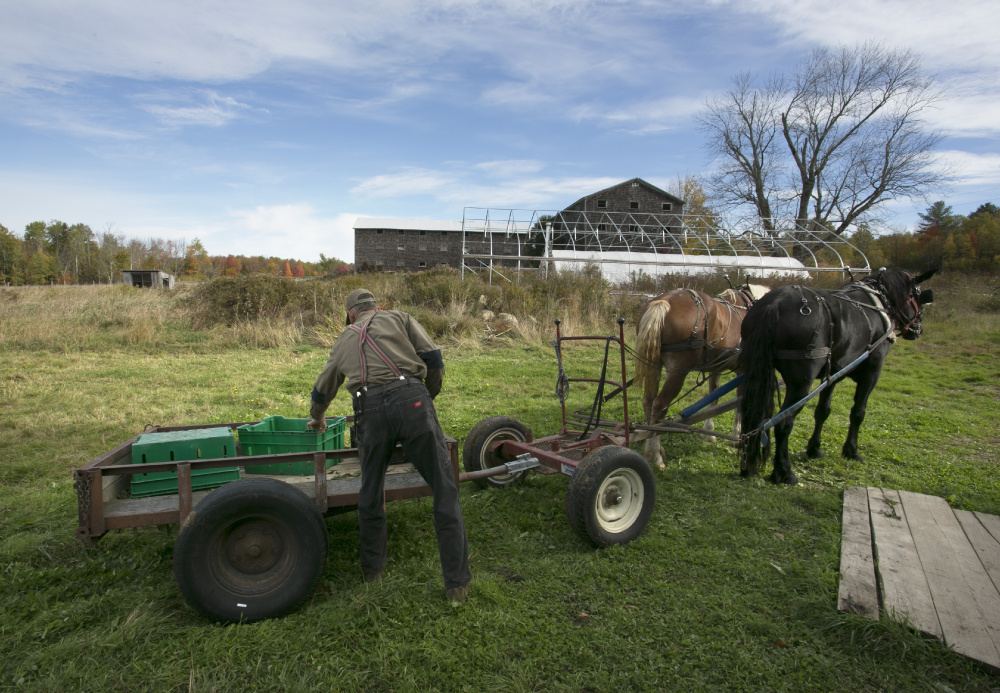

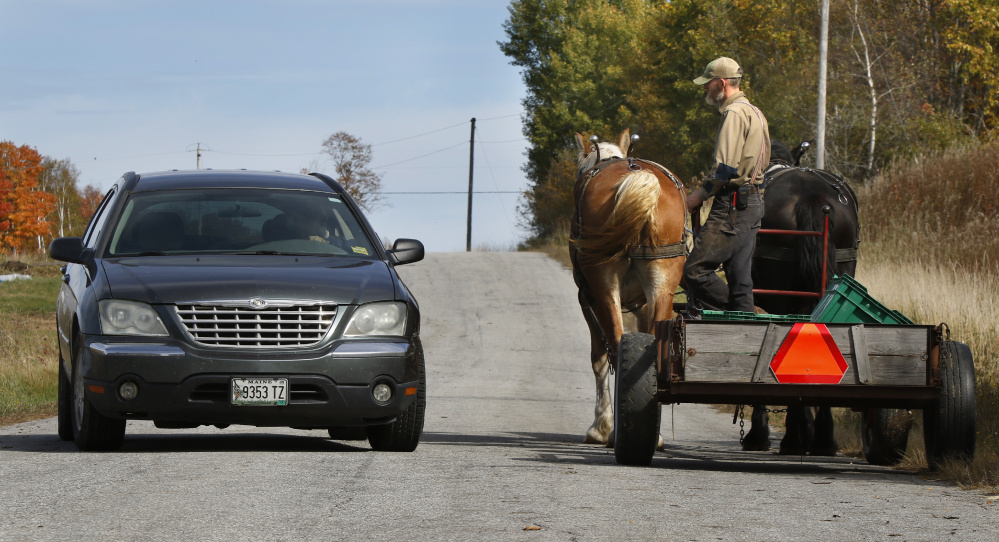
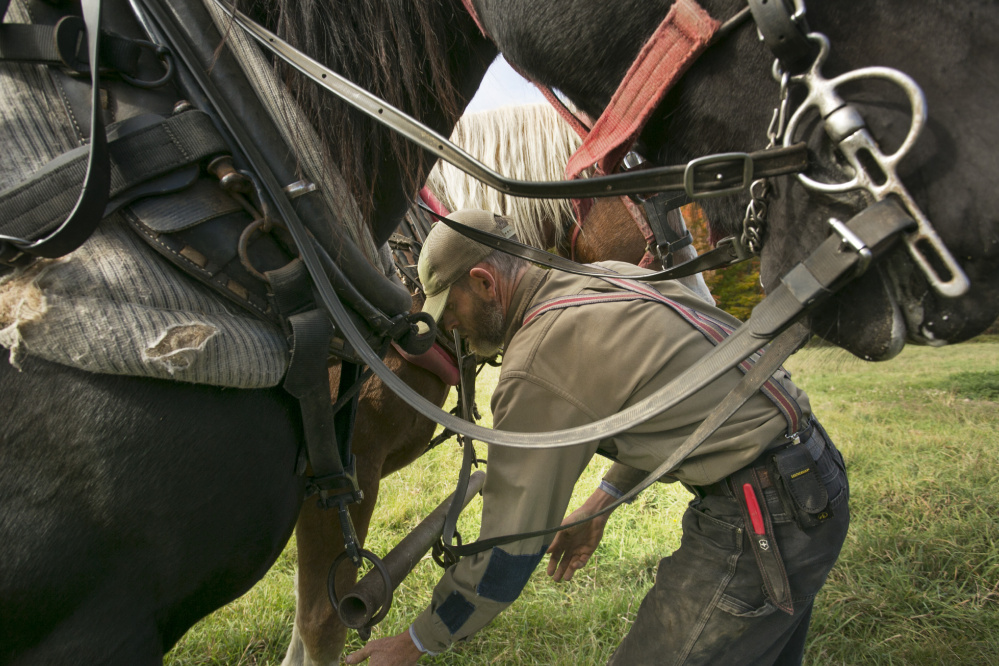
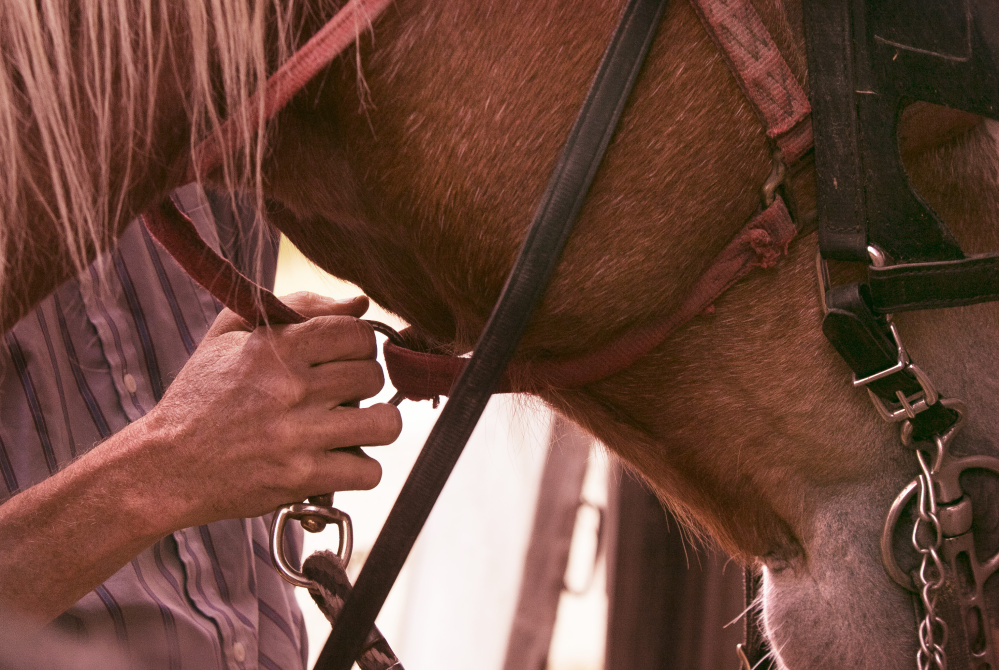
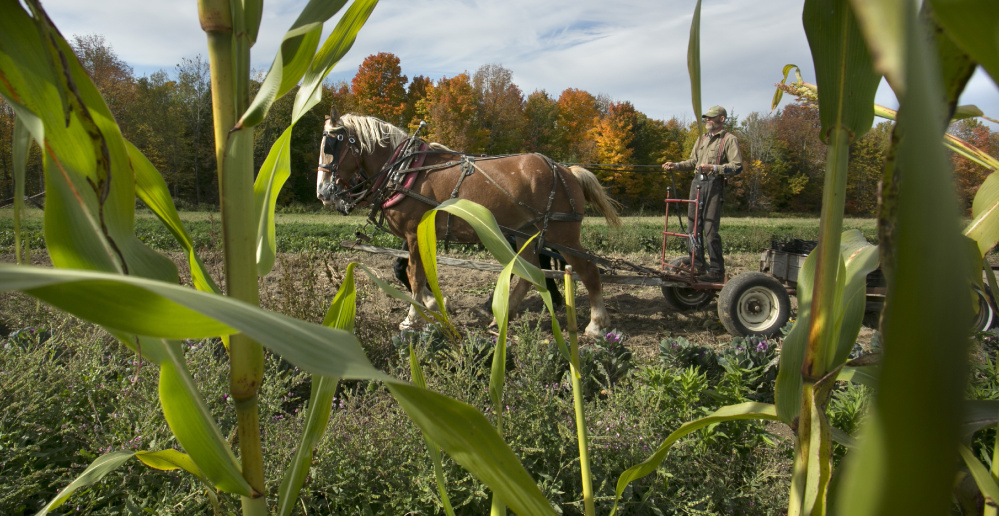
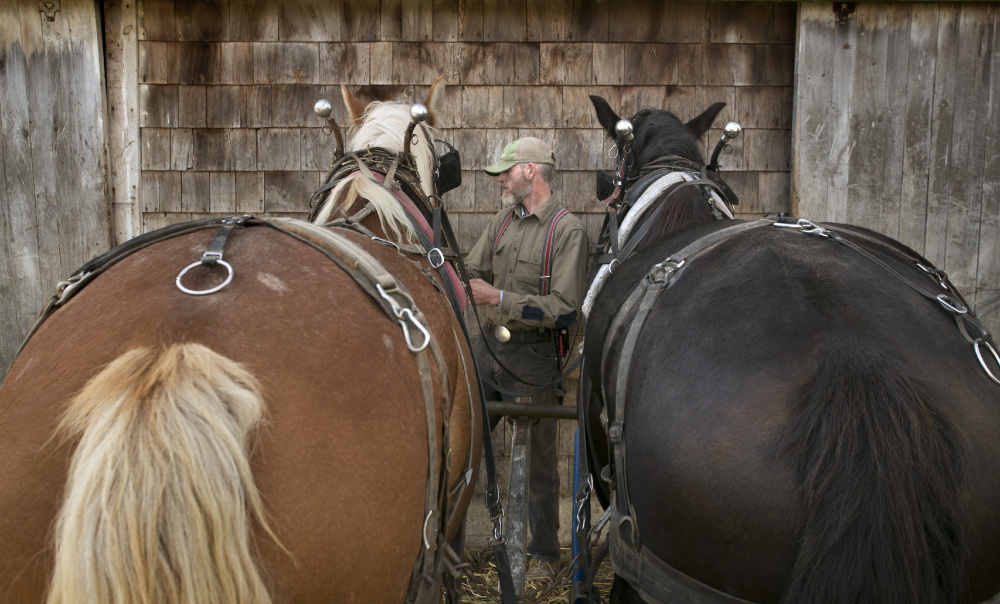
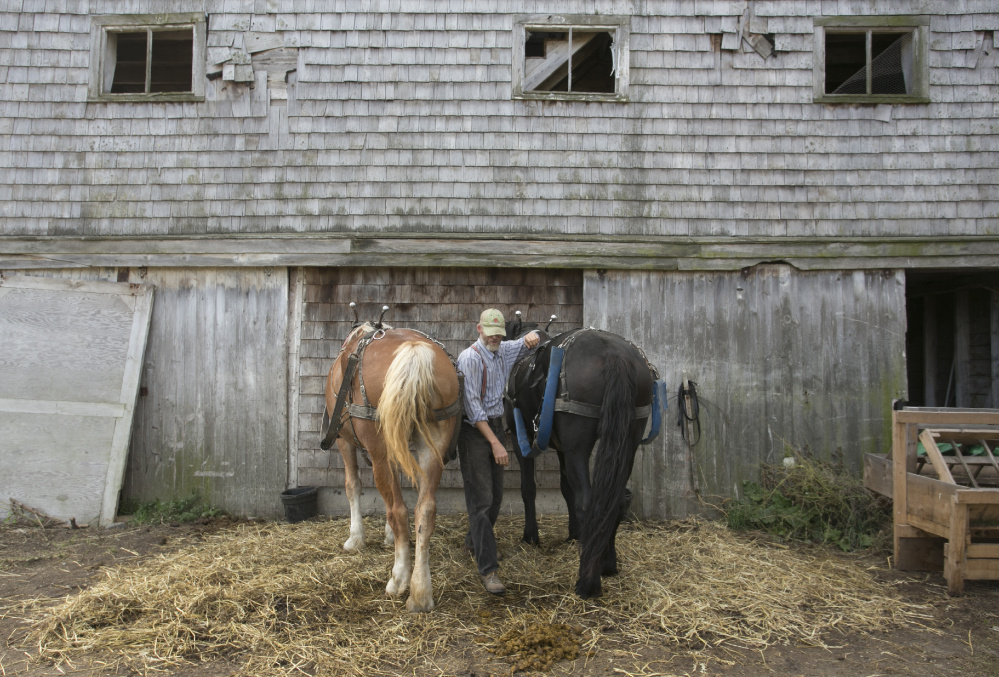
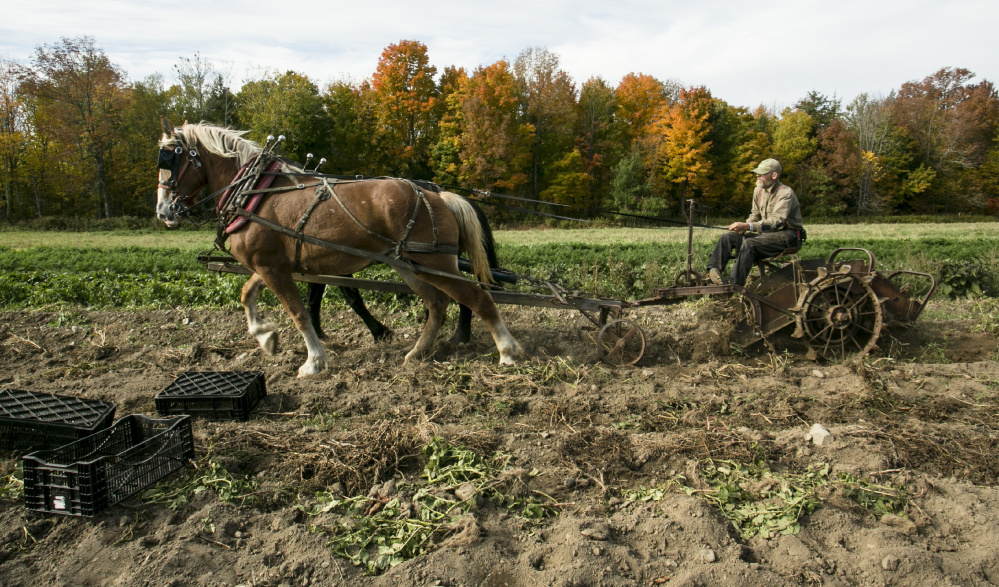
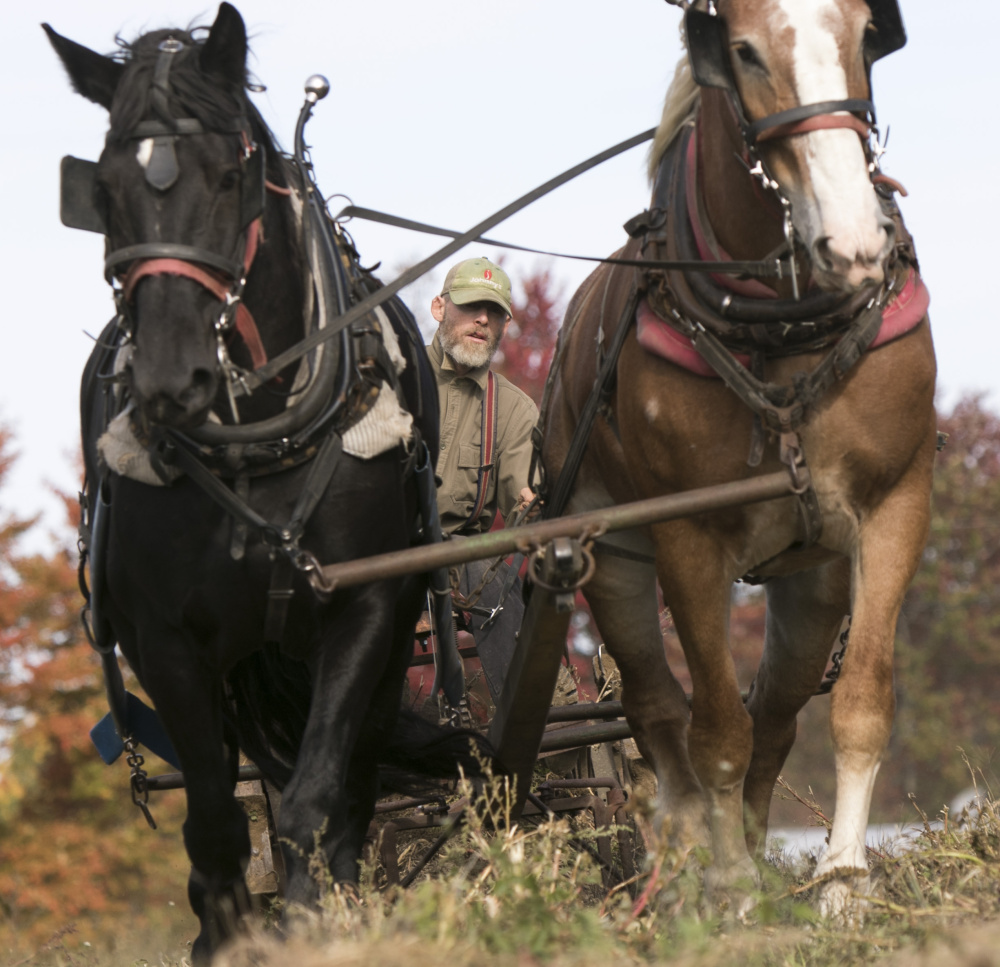

Success. Please wait for the page to reload. If the page does not reload within 5 seconds, please refresh the page.
Enter your email and password to access comments.
Hi, to comment on stories you must . This profile is in addition to your subscription and website login.
Already have a commenting profile? .
Invalid username/password.
Please check your email to confirm and complete your registration.
Only subscribers are eligible to post comments. Please subscribe or login first for digital access. Here’s why.
Use the form below to reset your password. When you've submitted your account email, we will send an email with a reset code.